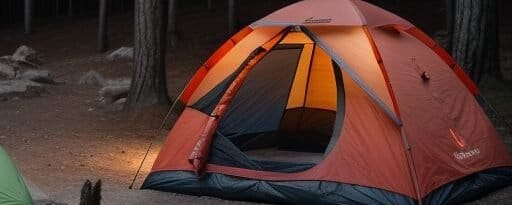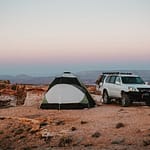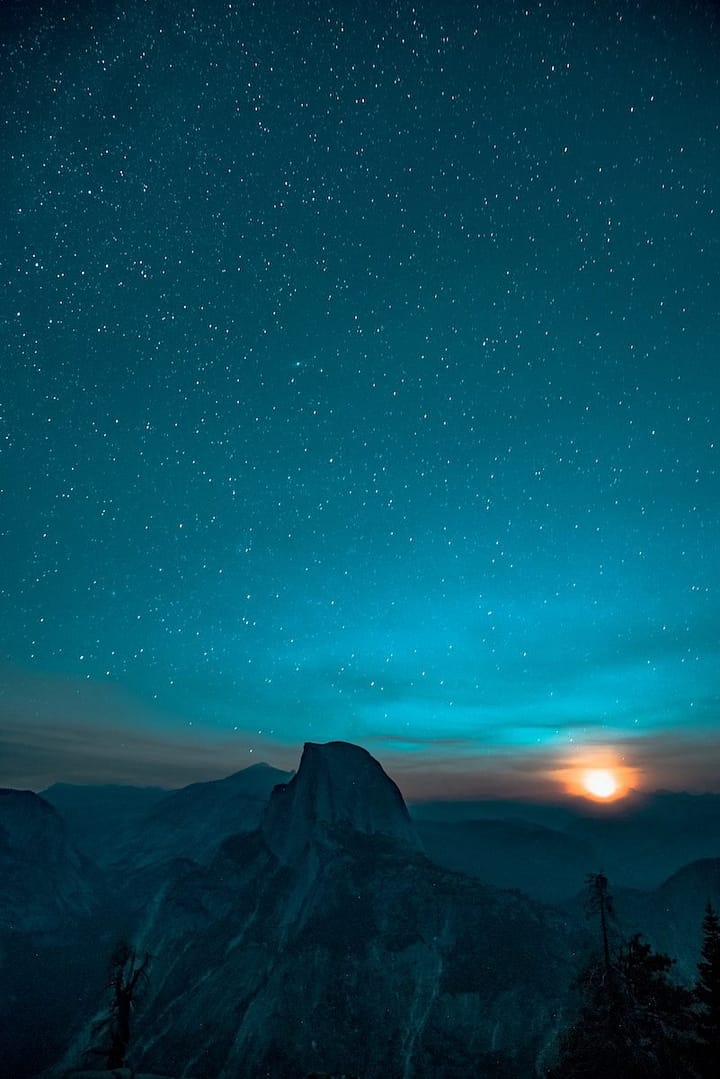Camping on Federal Lands
The Complete Guide to Camping on Federal Lands: Your Gateway to America’s Greatest Outdoor Adventures
Imagine waking up to sunrise over untouched wilderness, with no campground fees, no reservations, and miles of pristine nature stretching in every direction. This isn’t just a dream – it’s the reality of camping on federal lands across the United States. Whether you’re a seasoned boondocker or just discovering the freedom of dispersed camping, federal lands offer some of the most incredible and affordable outdoor experiences in America.
The United States is incredibly fortunate to have vast expanses of public land managed by various federal agencies. These lands – including national forests, Bureau of Land Management (BLM) areas, and other federal properties – provide millions of acres where you can camp legally and often completely free. Understanding how to camp on federal land opens up a world of possibilities that most people never even know exists.
Understanding Federal Lands: Your Public Playground
Before diving into the specifics of camping, it’s important to understand what federal lands actually are. These are public lands owned by all Americans and managed by federal agencies for various purposes, including recreation, conservation, and resource management. The primary agencies you’ll encounter for camping purposes are:
- U.S. Forest Service (USFS) – Manages 193 million acres of national forests and grasslands
- Bureau of Land Management (BLM) – Oversees about 245 million acres, primarily in western states
- National Park Service (NPS) – Manages national parks, monuments, and recreation areas
- U.S. Fish and Wildlife Service – Oversees national wildlife refuges
Each agency has different rules and regulations, but they all share a common goal: providing public access to America’s natural treasures while protecting these resources for future generations.
What Makes Federal Land Camping Special?
Free camping federal land USA opportunities are abundant, especially on Forest Service and BLM lands. Unlike private campgrounds or even many state parks, dispersed camping on federal lands often comes with no fees, no hookups, and no crowds – just you and nature in its purest form.

The Art of Dispersed Camping on Federal Lands
Dispersed camping federal lands, also known as “primitive camping” or “boondocking,” refers to camping outside of designated campgrounds. This is where the real adventure begins. Instead of pulling into a campground with defined sites, you’re finding your own perfect spot in the wilderness.
Most dispersed camping happens on Forest Service and BLM lands, where you can typically camp for free for up to 14 days in a 30-day period. After 14 days, you need to move at least 25 miles away before you can set up camp again. This system allows for extended travel while preventing any one area from being overused.
Pro Tips for Finding the Perfect Dispersed Camping Spot
- Look for existing fire rings or disturbed areas to minimize your impact
- Stay at least 200 feet from water sources to protect wildlife and water quality
- Choose level ground that’s not in a wash or depression
- Consider wind patterns and sun exposure for comfort
- Ensure you have adequate cell coverage if needed for safety
Essential Camping Rules Federal Land: What You Need to Know
Understanding camping regulations federal land is crucial for a successful and legal camping experience. While rules vary by agency and specific location, there are some common principles that apply across most federal lands:
Universal Federal Land Camping Rules
- Leave No Trace – Pack out all trash, minimize campfire impacts, and leave your campsite better than you found it
- Fire Restrictions – Always check current fire restrictions, which can change based on weather conditions and fire danger
- Vehicle Restrictions – Generally, you must camp within 150 feet of an existing road or trail
- Water Source Protection – Camp at least 200 feet from lakes, streams, and other water sources
- Wildlife Safety – Store food properly and never feed wildlife
- Time Limits – Most areas allow 14 days of camping, then require moving 25+ miles away
Important: Always Check Local Regulations
While these general rules apply broadly, specific areas may have additional restrictions. Always check with the local ranger district or field office before camping to ensure you’re following all applicable rules.
Federal Land Camping Permits: When You Need Them
One of the beautiful aspects of camping on federal lands is that many areas don’t require permits for basic dispersed camping. However, there are exceptions, and understanding when you need federal land camping permits can save you from fines and disappointment.
When Permits Are Required:
- Group Camping – Groups over a certain size (usually 15-75 people) typically need permits
- Special Use Areas – Some popular or sensitive areas require advance permits
- Extended Stays – Some locations require permits for stays longer than a few days
- Commercial Activities – Any commercial photography, guiding, or business activities
- National Parks – Most National Park Service camping requires reservations and fees
The good news is that when permits are required, they’re usually very affordable – often $5-20 for extended stays or special use permits.
| Agency | Typical Permit Cost | Duration | Advance Booking |
|---|---|---|---|
| Forest Service | Free – $20 | Up to 14 days | Sometimes required |
| BLM | Usually Free | Up to 14 days | Rarely required |
| National Parks | $15 – $35/night | Varies | Often required |
| Wildlife Refuges | Varies | Varies | Usually required |
Best Federal Lands for Camping: Where to Start Your Adventure
With millions of acres available, choosing the best federal lands for camping can feel overwhelming. Here are some standout regions that offer exceptional camping opportunities:
Western United States – The Boondocking Paradise
Arizona – The state is about 70% public land, with incredible BLM areas around Quartzsite, Lake Havasu, and Yuma. The Sonoran Desert offers mild winter temperatures perfect for snowbirds.
Utah – Home to the famous “Big Five” national parks, plus extensive BLM and Forest Service lands. Areas around Moab offer world-class camping with stunning red rock scenery.
California – From the Mojave Desert to the Sierra Nevada mountains, California’s federal lands offer incredible diversity. Death Valley, Joshua Tree area, and the Eastern Sierra provide unique camping experiences.
Nevada – Often overlooked, Nevada has vast BLM lands with minimal restrictions and stunning desert landscapes. Areas around Reno and Las Vegas offer easy access to federal camping.
Mountain States – Alpine Adventures
Colorado – Extensive national forest lands provide high-elevation camping with cool summers. Popular areas include the areas around Leadville, Gunnison, and Grand Junction.
Montana – Huge expanses of national forest and BLM land, with camping opportunities ranging from prairie to mountain peaks.
Don’t Overlook Eastern Federal Lands
While the West gets most of the attention for federal land camping, eastern states also offer opportunities. National forests in states like North Carolina, Virginia, and Tennessee provide excellent camping, especially for hiking and camping federal land adventures.
Federal vs State Land Camping: Understanding the Differences
Understanding federal vs state land camping differences helps you choose the right type of camping for your needs:
Federal Land Advantages:
- Often free camping with 14-day limits
- Vast areas with more solitude
- Consistent rules across state boundaries
- Better for long-term travel and extended stays
- More primitive, undeveloped camping opportunities
State Land Advantages:
- Often better facilities and amenities
- More predictable camping experiences
- Better for families and novice campers
- Often more accessible to population centers
- May offer more activities and interpretive programs
Where to Camp on Federal Land for Free: Your Money-Saving Guide
Finding where to camp on federal land for free is often easier than you might think. Here’s your strategy for locating free campsites federal lands:
Research Tools and Resources
Online Resources:
- Recreation.gov – Official federal recreation site with maps and information
- FreeRoam – Crowdsourced database of free camping locations
- Campendium – Reviews and photos of camping spots including federal lands
- iOverlander – Global camping database including US federal lands
- GaiaGPS – Detailed maps with property boundaries clearly marked
Physical Resources:
- Motor Vehicle Use Maps (MVUMs) from Forest Service offices
- BLM surface management maps
- Visitor center information and local ranger knowledge
Using Camping Map Federal Lands Effectively
When using a camping map federal lands resource, look for areas marked as “dispersed camping allowed” or areas without specific restrictions. Green areas on Forest Service maps typically indicate where camping is permitted, while BLM maps show public access areas.
Finding Federal Camping Land Near Me
Searching for federal camping land near me requires a bit of strategy, especially if you’re in eastern states where federal lands are less common. Here’s how to find opportunities:
Step-by-Step Search Process:
- Identify Federal Lands – Use the USGS National Map to identify federal lands in your area
- Contact Local Offices – Call or visit ranger districts and BLM field offices
- Check Specific Regulations – Each unit may have different rules about dispersed camping
- Plan for Seasonal Restrictions – Many areas have seasonal closures for wildlife protection
- Consider Adjacent States – Sometimes traveling a bit farther opens up more opportunities
RV Camping Federal Land: Big Rig Adventures
RV camping federal land presents unique opportunities and challenges. Many dispersed camping areas can accommodate RVs, but there are important considerations:
RV-Friendly Federal Camping Tips:
- Road Conditions – Ensure access roads can handle your RV’s size and weight
- Level Ground – Look for naturally level spots to avoid using excessive leveling blocks
- Turnaround Space – Make sure you can safely turn around or back out
- Generator Rules – Check local generator restrictions, which vary by area
- Waste Management – Plan for gray and black water disposal
- Fresh Water – Bring extra water capacity for longer stays
Size Restrictions
While there’s no universal size limit for RVs on federal lands, practical limitations exist. Many dispersed camping areas are accessed by narrow, winding roads better suited to smaller RVs and trailers under 30 feet.
Boondocking on Federal Lands: The Ultimate Freedom
Boondocking on federal lands represents the pinnacle of self-sufficient camping. This style of camping – also called dry camping – means camping without hookups for water, electricity, or sewer connections.
Essential Boondocking Equipment:
- Solar Panels – Renewable power for extended stays
- Generator – Backup power for cloudy days (check noise restrictions)
- Water Storage – Extra fresh water tanks or containers
- Waste Management – Portable waste tanks for longer stays
- Propane – Extra propane for cooking, heating, and refrigeration
- First Aid Kit – Comprehensive medical supplies for remote areas
Boondocking Success Strategies:
- Start Small – Begin with 2-3 day trips to test your systems and comfort level
- Monitor Resources – Track water, power, and waste tank levels daily
- Weather Awareness – Federal lands can experience rapid weather changes
- Emergency Planning – Have communication and evacuation plans
- Community Connection – Join boondocking communities for tips and support
Remote Camping Federal Land: Finding True Solitude
For those seeking remote camping federal land experiences, federal lands offer unparalleled opportunities to truly get away from it all. Remote camping requires additional preparation but offers incredible rewards.
Preparing for Remote Camping:
- Communication – Satellite communicators for emergencies
- Navigation – GPS units and paper maps as backup
- Extended Supplies – Food, water, and fuel for longer periods
- Mechanical Preparation – Basic tools and spare parts for your vehicle
- Medical Preparedness – Comprehensive first aid and emergency medications
Remote Camping Safety Tips
- Always tell someone your plans and expected return
- Carry emergency communication devices
- Check weather forecasts and road conditions
- Know your vehicle’s capabilities and limitations
- Bring more supplies than you think you’ll need
Camping on BLM Land Rules: The Wild West of Camping
Camping on BLM land rules tend to be the most relaxed among federal agencies, making BLM lands incredibly popular with boondockers and long-term travelers. Understanding these rules helps you make the most of these opportunities:
Standard BLM Camping Rules:
- 14-Day Limit – Standard camping period before moving 25+ miles
- No Permit Required – Most BLM dispersed camping is free and requires no permits
- Minimal Restrictions – Generally fewer rules than other federal agencies
- Vehicle Access – Must camp within 300 feet of existing roads or trails
- Fire Safety – Follow current fire restrictions and use established fire rings when possible
Long-Term Visitor Areas (LTVAs)
BLM operates special Long-Term Visitor Areas in Arizona and California where you can camp for extended periods (up to 7 months) for a single fee, typically around $180. These areas are incredibly popular with snowbirds and offer basic amenities like dump stations and fresh water.
Forest Service Camping Guide: Navigating the National Forests
The Forest Service camping guide principles help you understand camping in America’s 154 national forests. These lands offer incredible diversity, from desert landscapes to alpine meadows.
Forest Service Camping Categories:
- Developed Campgrounds – Traditional campgrounds with fees and amenities
- Dispersed Camping – Free camping outside designated campgrounds
- Wilderness Areas – Backpacking and primitive camping only
- Recreation Areas – May have special rules and fees
Forest Service Camping Tips:
- Motor Vehicle Use Maps – Essential for understanding where vehicles are allowed
- Seasonal Closures – Many high-elevation areas close in winter
- Fire Restrictions – Can change rapidly based on conditions
- Wildlife Considerations – Food storage requirements vary by region
- Water Sources – Natural water should always be treated before drinking
Legal Camping on Federal Property: Staying Within the Rules
Understanding legal camping on federal property ensures you have great experiences while protecting these resources for future generations. Here’s what you need to know:
Key Legal Principles:
- Public Access Rights – Federal lands belong to all Americans
- Multiple Use Mandate – Lands managed for various purposes including recreation
- Local Authority – Local managers can impose additional restrictions
- Seasonal Variations – Rules may change based on wildlife, weather, or fire conditions
- Enforcement – Rangers have authority to enforce rules and issue citations
Respect Closures and Restrictions
Temporary closures protect wildlife during sensitive periods like nesting season or protect public safety during extreme weather. Always respect these closures – they’re temporary and serve important purposes.
Planning Your Federal Lands Camping Adventure
Successfully camping on federal lands requires some planning, but it doesn’t have to be complicated. Here’s a step-by-step approach:
Pre-Trip Planning:
- Research Your Destination – Understand local rules, seasons, and access
- Check Current Conditions – Weather, fire restrictions, and road conditions
- Plan Your Route – Include fuel stops and supply points
- Prepare Equipment – Ensure all gear is in good working order
- Emergency Planning – Communication plans and emergency contacts
During Your Stay:
- Follow Leave No Trace principles
- Monitor weather and fire conditions
- Respect other campers and wildlife
- Keep track of your 14-day limit
- Be prepared to move if conditions change
Technology and Tools for Federal Land Camping
Modern technology can greatly enhance your federal land camping experience when used wisely:
Essential Apps and Tools:
- GaiaGPS – Detailed topographic maps with property boundaries
- Weather Apps – Critical for safety in remote areas
- Satellite Communicators – Emergency communication in areas without cell coverage
- Solar Charging Systems – Keep devices powered off-grid
- Water Filtration – Purify natural water sources safely
Embrace the Freedom of Federal Land Camping
Camping on federal lands offers an unmatched combination of freedom, affordability, and natural beauty. Whether you’re interested in free camping opportunities, remote wilderness experiences, or accessible RV-friendly locations, America’s federal lands provide options for every type of camper.
The key to successful federal land camping is preparation, respect, and flexibility. Understand the rules, prepare for self-sufficient camping, and always follow Leave No Trace principles. These practices ensure that these incredible resources remain available for future generations of campers.
Start with shorter trips to familiar areas as you develop your skills and confidence. Join online communities of federal land campers to learn from experienced boondockers and share your own discoveries. Most importantly, remember that camping on federal lands is a privilege – one that comes with the responsibility to protect and preserve these special places.
Your federal land camping adventure awaits. Pack your sense of adventure, respect for nature, and spirit of self-reliance. The vast expanses of America’s public lands are calling, offering experiences and memories that will last a lifetime. Welcome to the ultimate camping freedom!











